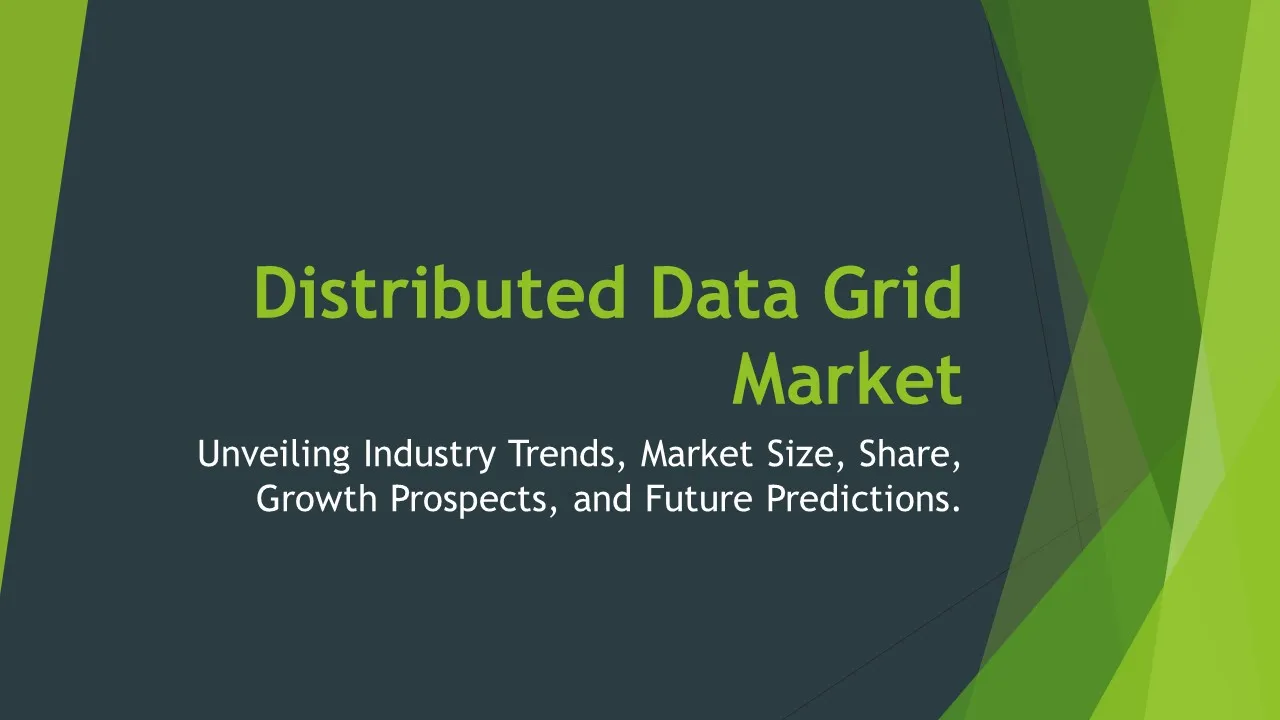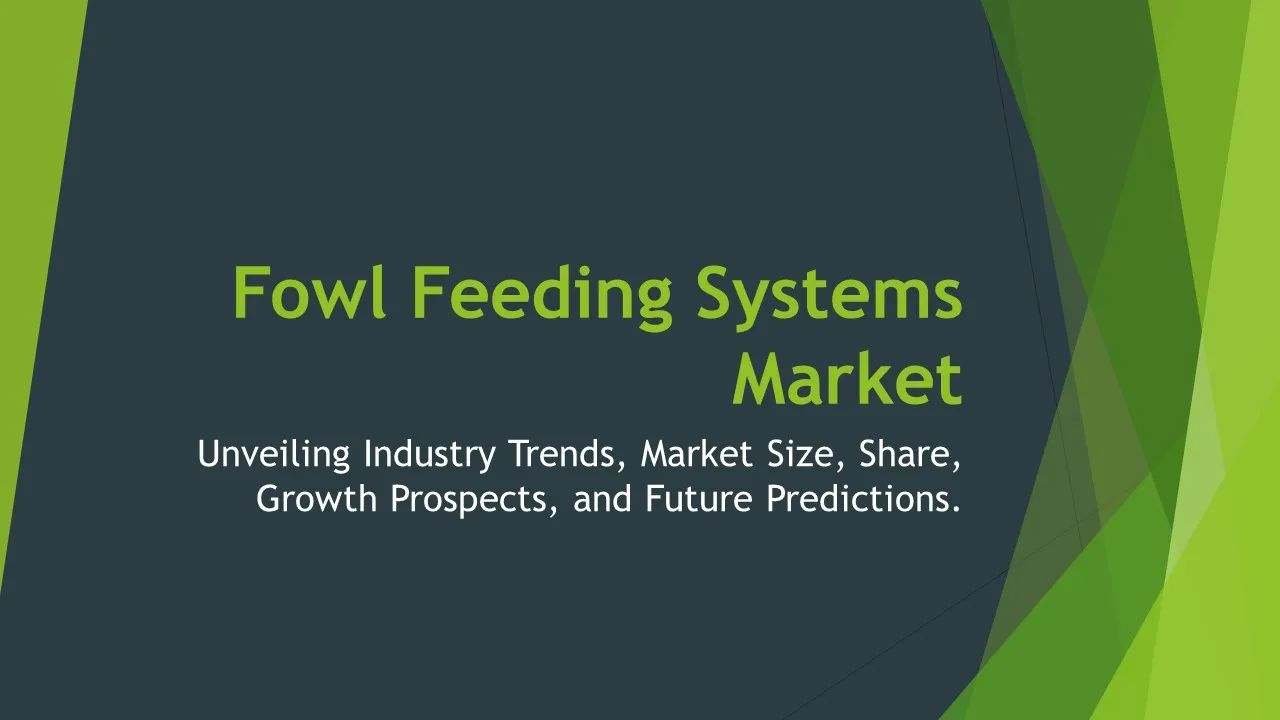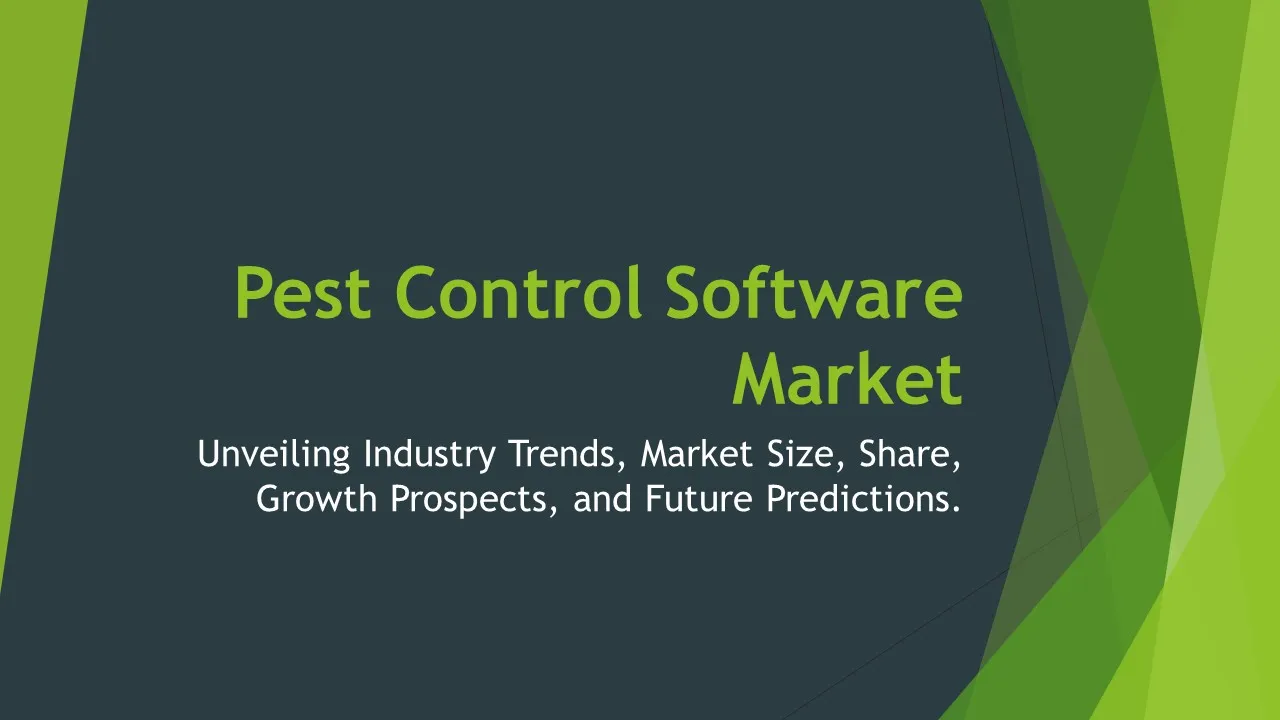Digital Agriculture Software
Digital Agriculture Software Market Segments - by Type (Farm Management Software, Precision Farming Software, Livestock Monitoring Software, Agricultural Finance Software, and Others), Application (Precision Farming, Livestock Monitoring, Inventory Management, Financial Management, and Others), Deployment (Cloud-based, On-premise), Farm Size (Small and Medium-sized Farms, Large Farms), and Region (North America, Europe, Asia Pacific, Latin America, Middle East & Africa) - Global Industry Analysis, Growth, Share, Size, Trends, and Forecast 2025-2035
- Report Preview
- Table Of Content
- Segments
- Methodology
Digital Agriculture Software Market Outlook
The global digital agriculture software market is projected to reach USD 8.7 billion by 2035, growing at a compound annual growth rate (CAGR) of approximately 13.5% from 2025 to 2035. The increasing demand for efficient agricultural practices driven by the need for enhanced productivity, cost reduction, and sustainable farming methods are some of the critical growth factors fueling this market. Additionally, the integration of advanced technologies such as artificial intelligence, machine learning, and IoT (Internet of Things) within agricultural frameworks is leading to improved decision-making, crop yields, and resource management. As environmental concerns continue to rise, farmers are increasingly adopting digital solutions to help mitigate their impact and ensure sustainable practices. The growing trend of urbanization and the increasing population further necessitate the adoption of digital agriculture solutions to optimize land use and enhance food security globally.
Growth Factor of the Market
One of the primary growth factors of the digital agriculture software market is the increasing adoption of precision farming techniques that leverage data analytics and real-time monitoring. This shift towards technology in farming is not only aimed at improving yields but also at optimizing resource usage, thereby reducing operational costs. Furthermore, government initiatives promoting digitalization in agriculture are playing an integral role in enhancing the market landscape. The rising integration of IoT-enabled devices in farming further allows for better monitoring and management of crops and livestock, creating substantial demand for specialized software solutions. The focus on sustainable practices, driven by both consumer preference and regulatory pressures, is also encouraging farmers to invest in digital tools that can help them meet environmental standards. Additionally, as more agricultural data becomes available, the importance of software that can analyze, interpret, and utilize this data effectively continues to rise, pushing the market towards a more technology-driven future.
Key Highlights of the Market
- The global market is projected to grow significantly due to advancements in technology and increasing investments in AgriTech.
- Precision farming is expected to dominate the market, offering substantial opportunities for software innovation.
- Cloud-based deployment models are becoming increasingly popular due to their flexibility and scalability.
- Small and medium-sized farms are rapidly adopting digital agriculture solutions to improve efficiency.
- North America is anticipated to hold a substantial share of the market, driven by high technology adoption rates and significant investments in agriculture.
By Type
Farm Management Software:
Farm Management Software (FMS) is designed to assist farmers in managing various farm activities, from planning and monitoring to analyzing all activities on the farm. This software often encompasses a range of functionalities that include crop rotation planning, labor management, resource allocation, and financial tracking. With the integration of GPS technology and data analytics, FMS can provide valuable insights into farm operations, thereby enhancing productivity and profitability. The growing demand for FMS is driven by the need for farmers to make data-informed decisions, optimize their resources, and streamline their operations. Moreover, the ease of use and accessibility of mobile applications connected to FMS are making them increasingly popular among farmers who wish to manage their operations on the go.
Precision Farming Software:
Precision Farming Software focuses on optimizing field-level management regarding crop farming. This type of software utilizes data from various sources, including satellite imagery, weather station data, and IoT sensors, to provide farmers with precise information about crop health, soil conditions, and environmental factors. By leveraging this data, farmers can make informed decisions about planting, irrigation, fertilization, and pest management. The adoption of precision farming software is expected to grow significantly as it enables farmers to increase yields while minimizing waste and reducing the environmental impact of their operations. Moreover, as precision agriculture continues to evolve, software solutions are becoming more sophisticated, offering predictive analytics and machine learning capabilities to further enhance farming strategies.
Livestock Monitoring Software:
Livestock Monitoring Software is designed to enhance the management of animal husbandry operations. This software helps farmers track the health, location, and productivity of their livestock, thus ensuring optimal care and management. Through the use of IoT devices, farmers can monitor vital signs and behavior of their animals in real-time, which aids in early detection of health issues and improves overall herd management. The increasing focus on animal welfare, along with the rising demand for livestock products, is contributing to the growth of this segment. Furthermore, advancements in wearable technology for livestock are expected to drive further innovation in livestock monitoring solutions, making them indispensable for modern farming operations.
Agricultural Finance Software:
Agricultural Finance Software is specifically tailored to meet the financial needs of farmers and agribusinesses. This type of software provides tools for budgeting, financial forecasting, expense tracking, and management of loans and investments specific to the agricultural sector. As financial management becomes increasingly complex due to fluctuating market conditions, farmers are turning to specialized software to gain better insights into their financial health. Moreover, with the rise of digital banking and online financial services, agricultural finance software is evolving to offer integrated solutions that can streamline financial processes, making it easier for farmers to manage their finances efficiently and effectively.
Others:
This category includes various other types of digital agriculture software that may not fall into the primary categories. These could encompass software solutions for supply chain management, market access platforms, and agronomic consultation tools. The flexibility and customization potential of such software make them appealing to a diverse range of agricultural stakeholders. As the agriculture sector continues to embrace digital transformation, there is a growing recognition of the importance of specialized software solutions to address specific challenges faced by various stakeholders, thus fostering innovation and development in this space.
By Application
Precision Farming:
Precision Farming is one of the key applications of digital agriculture software, focusing on enhancing crop production efficiency and sustainability. The integration of precision farming techniques allows for the use of real-time data to make informed decisions about irrigation, fertilization, pest control, and harvesting. With the aid of sensors, drones, and satellite imagery, farmers can monitor their fields and adjust farming practices based on specific field conditions. This application not only helps in maximizing yields but also minimizes resource waste and environmental impact, making it a crucial aspect of modern agricultural practices. As technologies evolve, precision farming is expected to continue to gain traction, further driving the demand for specialized software solutions.
Livestock Monitoring:
Livestock monitoring is another significant application of digital agriculture software that is gaining importance in the farming sector. This application allows farmers to keep track of the health, location, and productivity of their livestock through real-time monitoring and data analytics. By utilizing IoT devices and wearables, farmers can detect health issues early, monitor feeding habits, and optimize breeding practices. The growing emphasis on animal welfare and regulatory compliance is driving the need for effective livestock management solutions. As farmers become more aware of the benefits of data-driven animal management, the demand for livestock monitoring software is expected to rise, transforming traditional livestock farming practices.
Inventory Management:
Inventory management applications in digital agriculture software are essential for farmers to manage their resources effectively. This involves tracking inputs such as seeds, fertilizers, and pesticides, as well as finished products ready for sale. Efficient inventory management enables farmers to optimize their supply chain and reduce costs associated with overstocking or stockouts. With the ability to monitor inventory levels in real-time and forecast future needs based on historical data, farmers can streamline their operations and enhance productivity. As the agriculture sector becomes increasingly competitive, the importance of effective inventory management is set to grow, further driving the adoption of specialized software solutions.
Financial Management:
Financial management applications within digital agriculture software are crucial for farmers to maintain their financial health and sustainability. These applications assist in budgeting, forecasting, and managing cash flow, allowing farmers to make informed financial decisions. Financial management software can also integrate with other agricultural systems, providing a holistic view of farm operations. As the agricultural sector faces various financial challenges, including fluctuating market prices and changing regulations, the importance of robust financial management tools is becoming increasingly evident. Farmers are increasingly recognizing the need for specialized software that can cater to the financial intricacies of agriculture, further driving market growth.
Others:
This category encompasses various other applications of digital agriculture software that cater to different farming needs. These can include market access platforms that connect farmers directly with consumers, agronomic consultation tools that provide expert advice, and sustainability tracking applications that help farmers monitor their environmental impact. As the agriculture industry evolves, these applications are gaining significance, providing farmers with comprehensive solutions tailored to their specific challenges. The increasing recognition of the importance of data-driven decision-making in agriculture is expected to bolster the growth of these varied applications, enhancing the overall effectiveness of farming practices.
By Deployment
Cloud-based:
Cloud-based deployment of digital agriculture software is increasingly favored due to its numerous advantages, including scalability, flexibility, and cost-effectiveness. This deployment model allows farmers to access software applications from anywhere with an internet connection, facilitating real-time data access and collaboration among agricultural stakeholders. Cloud-based solutions eliminate the need for extensive on-premise hardware and reduce maintenance costs, making them particularly appealing to small and medium-sized farms. As more farmers recognize the benefits of cloud technology, the demand for cloud-based agricultural software is expected to surge, further driving innovation in this sector.
On-premise:
On-premise deployment of digital agriculture software remains an important segment for farms that prefer to maintain control over their data and software infrastructure. This model allows farmers to install software directly on their servers, providing greater security and customization options. On-premise solutions can be particularly advantageous for larger farms with complex operations that require tailored software configurations. However, the initial investment and ongoing maintenance costs associated with on-premise deployment can be significant, making it less attractive compared to cloud-based options. Nevertheless, this deployment model continues to serve a substantial segment of the market, particularly among established agricultural enterprises.
By Farm Size
Small and Medium-sized Farms:
Small and medium-sized farms represent a significant portion of the digital agriculture software market, as these farms increasingly seek innovative solutions to enhance their productivity and efficiency. The adoption of digital tools is particularly crucial for these farms as they often face resource constraints and intense competition. Digital agriculture software offers them the ability to optimize operations, reduce costs, and improve decision-making through data-driven insights. Furthermore, many software providers are developing user-friendly applications that cater specifically to the unique needs of small and medium-sized farms, facilitating their digital transformation. As awareness of the benefits of digital solutions grows, this segment is expected to experience substantial growth in software adoption.
Large Farms:
Large farms, characterized by extensive operations and greater resource availability, are also a key segment in the digital agriculture software market. These farms often require sophisticated software solutions to manage their complex operations effectively. The integration of technologies such as precision farming, livestock monitoring, and advanced financial management is essential for large farms to maintain competitive advantage and ensure sustainability. Furthermore, large farms often have the capacity to invest in comprehensive software systems that can integrate various aspects of their operations, from resource management to supply chain logistics. As the agricultural landscape evolves, the demand for tailored software solutions that can meet the unique challenges of large farms is expected to continue to grow.
By Region
North America is projected to dominate the digital agriculture software market, holding a significant share due to the early adoption of technology and substantial investments in agricultural innovation. The region's farmers are increasingly leveraging digital solutions to enhance productivity, manage resources more effectively, and comply with regulatory requirements. With a projected CAGR of 14.2%, North America is set to continue its leadership in the market as more stakeholders recognize the value of digital agriculture solutions. The presence of numerous technology providers and a supportive regulatory framework further bolster the region's market growth, making it a hub for agricultural technology advancements.
Europe follows closely, with a strong emphasis on sustainable farming practices and environmental regulations driving the adoption of digital agriculture software. The region is expected to witness significant growth, with a CAGR of 12.8%, as farmers increasingly seek solutions to improve efficiency and reduce their ecological footprint. The ongoing digital transformation in agriculture is supported by various government initiatives promoting innovation and investment in AgriTech. Meanwhile, the Asia Pacific region is emerging as a promising market, with increasing agricultural productivity demands and rising technology adoption among farmers. The growth in this region is also being fueled by urbanization and a growing population, necessitating the implementation of advanced agricultural practices to meet food security challenges. Consequently, the digital agriculture software market is projected to expand rapidly across various geographies, driven by diverse factors unique to each region.
Opportunities
The digital agriculture software market is brimming with opportunities, particularly in the realm of technological advancements. Innovations such as artificial intelligence, machine learning, and IoT are transforming traditional farming practices, enabling farmers to make data-driven decisions that enhance productivity and sustainability. The integration of these technologies into digital agriculture solutions presents immense potential for software developers and agritech companies to create more sophisticated tools tailored to the evolving needs of farmers. Furthermore, as climate change continues to impact agricultural practices globally, there is a growing demand for solutions that help farmers adapt to changing conditions, manage resources efficiently, and reduce their environmental impact. This presents an opportunity for the development of software that focuses on sustainability and resilience in agriculture, thereby catering to the pressing demands of the modern agri-sector.
Another significant opportunity lies in the growing awareness and acceptance of digital solutions among farmers in emerging markets. As agricultural practices evolve in regions such as Asia Pacific and Latin America, there is a burgeoning demand for innovative software solutions that can enhance productivity and address specific local challenges. The increasing penetration of mobile devices and internet connectivity in these regions further supports this trend, providing farmers with access to digital agriculture tools previously unavailable. Companies that can tailor their offerings to meet the unique needs of these markets are likely to find substantial growth opportunities. Additionally, collaboration between technology providers, agricultural stakeholders, and governmental organizations can foster innovation and facilitate knowledge sharing, paving the way for a more digitally advanced agricultural future.
Threats
Despite the promising growth prospects for the digital agriculture software market, several threats could impede its progress. One major concern is the cybersecurity risk associated with the increasing use of digital technologies in agriculture. As more farms adopt digital solutions, they become vulnerable to cyberattacks that can result in data breaches and operational disruptions. This poses a significant threat to farmers' sensitive data and can undermine trust in digital solutions, potentially slowing down adoption rates. Additionally, the lack of digital literacy among some segments of the farming population may hinder the effective utilization of advanced software solutions, creating a barrier to entry for certain farmers. It is essential for software providers to develop user-friendly applications and offer adequate training to facilitate the transition to digital agriculture.
Another notable threat to the digital agriculture software market is the potential for market saturation as competition among software providers intensifies. With numerous companies entering the market, there is a risk of oversupply of similar solutions, leading to price wars and reduced margins. This could stifle innovation as companies focus on price competition rather than developing unique, value-added features in their software. Furthermore, regulatory challenges in different regions may complicate the introduction of new digital solutions, as compliance with varying agricultural standards and data protection laws can be complex. To navigate these threats, companies must remain agile, continuously innovate, and differentiate their offerings to maintain a competitive edge in the evolving digital agriculture landscape.
Competitor Outlook
- Trimble Ag Software
- Ag Leader Technology
- Granular, Inc.
- Cropio
- FarmLogs
- Raven Industries
- AgriWebb
- AgriData
- IBM Watson for Agriculture
- Microsoft Azure FarmBeats
- Climate Corporation
- Deere & Company (John Deere)
- FieldView
- Syngenta Crop Protection
- CNH Industrial (Case IH)
The competitive landscape of the digital agriculture software market is characterized by a plethora of players ranging from established technology firms to emerging startups. Companies are increasingly focusing on innovation and technological advancements to differentiate their offerings in a crowded marketplace. Major players are investing heavily in research and development to enhance their software solutions, incorporating cutting-edge technologies such as machine learning, AI, and IoT connectivity to meet the diverse needs of modern farming. Collaborative partnerships and strategic alliances are also becoming common as firms seek to combine their expertise and expand their market reach. As the demand for digital agriculture solutions continues to rise, competition is likely to intensify, driving further innovation and development in the sector.
Among the key competitors, Trimble Ag Software stands out for its comprehensive suite of solutions aimed at enhancing productivity and profitability for farmers. The company offers a range of software applications that cover various aspects of farm management, precision agriculture, and field operations. With a strong emphasis on integration and user experience, Trimble continues to lead the charge in providing farmers with the tools they need to optimize their operations. Similarly, Deere & Company, through its John Deere brand, has established itself as a formidable player in the digital agriculture market by offering advanced precision farming solutions that seamlessly integrate with their equipment. The focus on technology-driven farming practices positions these companies at the forefront of the industry.
Additionally, companies like IBM and Microsoft are leveraging their expertise in cloud computing and data analytics to provide innovative digital agriculture solutions. IBM's Watson for Agriculture integrates AI capabilities to offer farmers actionable insights that can enhance decision-making processes. Meanwhile, Microsoft Azure FarmBeats enables the aggregation of data from various sources to provide a holistic view of farming operations. These tech giants are increasingly recognizing the potential of the agricultural sector and are investing in developing tailored solutions that address the unique challenges faced by farmers. As competition continues to evolve, collaboration between technology providers and agricultural stakeholders is essential for fostering innovation and driving the industry toward a more sustainable and technologically advanced future.
1 Appendix
- 1.1 List of Tables
- 1.2 List of Figures
2 Introduction
- 2.1 Market Definition
- 2.2 Scope of the Report
- 2.3 Study Assumptions
- 2.4 Base Currency & Forecast Periods
3 Market Dynamics
- 3.1 Market Growth Factors
- 3.2 Economic & Global Events
- 3.3 Innovation Trends
- 3.4 Supply Chain Analysis
4 Consumer Behavior
- 4.1 Market Trends
- 4.2 Pricing Analysis
- 4.3 Buyer Insights
5 Key Player Profiles
- 5.1 Cropio
- 5.1.1 Business Overview
- 5.1.2 Products & Services
- 5.1.3 Financials
- 5.1.4 Recent Developments
- 5.1.5 SWOT Analysis
- 5.2 AgriData
- 5.2.1 Business Overview
- 5.2.2 Products & Services
- 5.2.3 Financials
- 5.2.4 Recent Developments
- 5.2.5 SWOT Analysis
- 5.3 AgriWebb
- 5.3.1 Business Overview
- 5.3.2 Products & Services
- 5.3.3 Financials
- 5.3.4 Recent Developments
- 5.3.5 SWOT Analysis
- 5.4 FarmLogs
- 5.4.1 Business Overview
- 5.4.2 Products & Services
- 5.4.3 Financials
- 5.4.4 Recent Developments
- 5.4.5 SWOT Analysis
- 5.5 FieldView
- 5.5.1 Business Overview
- 5.5.2 Products & Services
- 5.5.3 Financials
- 5.5.4 Recent Developments
- 5.5.5 SWOT Analysis
- 5.6 Granular, Inc.
- 5.6.1 Business Overview
- 5.6.2 Products & Services
- 5.6.3 Financials
- 5.6.4 Recent Developments
- 5.6.5 SWOT Analysis
- 5.7 Raven Industries
- 5.7.1 Business Overview
- 5.7.2 Products & Services
- 5.7.3 Financials
- 5.7.4 Recent Developments
- 5.7.5 SWOT Analysis
- 5.8 Climate Corporation
- 5.8.1 Business Overview
- 5.8.2 Products & Services
- 5.8.3 Financials
- 5.8.4 Recent Developments
- 5.8.5 SWOT Analysis
- 5.9 Trimble Ag Software
- 5.9.1 Business Overview
- 5.9.2 Products & Services
- 5.9.3 Financials
- 5.9.4 Recent Developments
- 5.9.5 SWOT Analysis
- 5.10 Ag Leader Technology
- 5.10.1 Business Overview
- 5.10.2 Products & Services
- 5.10.3 Financials
- 5.10.4 Recent Developments
- 5.10.5 SWOT Analysis
- 5.11 CNH Industrial (Case IH)
- 5.11.1 Business Overview
- 5.11.2 Products & Services
- 5.11.3 Financials
- 5.11.4 Recent Developments
- 5.11.5 SWOT Analysis
- 5.12 Syngenta Crop Protection
- 5.12.1 Business Overview
- 5.12.2 Products & Services
- 5.12.3 Financials
- 5.12.4 Recent Developments
- 5.12.5 SWOT Analysis
- 5.13 Microsoft Azure FarmBeats
- 5.13.1 Business Overview
- 5.13.2 Products & Services
- 5.13.3 Financials
- 5.13.4 Recent Developments
- 5.13.5 SWOT Analysis
- 5.14 IBM Watson for Agriculture
- 5.14.1 Business Overview
- 5.14.2 Products & Services
- 5.14.3 Financials
- 5.14.4 Recent Developments
- 5.14.5 SWOT Analysis
- 5.15 Deere & Company (John Deere)
- 5.15.1 Business Overview
- 5.15.2 Products & Services
- 5.15.3 Financials
- 5.15.4 Recent Developments
- 5.15.5 SWOT Analysis
- 5.1 Cropio
6 Market Segmentation
- 6.1 Digital Agriculture Software Market, By Type
- 6.1.1 Farm Management Software
- 6.1.2 Precision Farming Software
- 6.1.3 Livestock Monitoring Software
- 6.1.4 Agricultural Finance Software
- 6.1.5 Others
- 6.2 Digital Agriculture Software Market, By Farm Size
- 6.2.1 Small and Medium-sized Farms
- 6.2.2 Large Farms
- 6.3 Digital Agriculture Software Market, By Deployment
- 6.3.1 Cloud-based
- 6.3.2 On-premise
- 6.4 Digital Agriculture Software Market, By Application
- 6.4.1 Precision Farming
- 6.4.2 Livestock Monitoring
- 6.4.3 Inventory Management
- 6.4.4 Financial Management
- 6.4.5 Others
- 6.1 Digital Agriculture Software Market, By Type
7 Competitive Analysis
- 7.1 Key Player Comparison
- 7.2 Market Share Analysis
- 7.3 Investment Trends
- 7.4 SWOT Analysis
8 Research Methodology
- 8.1 Analysis Design
- 8.2 Research Phases
- 8.3 Study Timeline
9 Future Market Outlook
- 9.1 Growth Forecast
- 9.2 Market Evolution
10 Geographical Overview
- 10.1 Europe - Market Analysis
- 10.1.1 By Country
- 10.1.1.1 UK
- 10.1.1.2 France
- 10.1.1.3 Germany
- 10.1.1.4 Spain
- 10.1.1.5 Italy
- 10.1.1 By Country
- 10.2 Asia Pacific - Market Analysis
- 10.2.1 By Country
- 10.2.1.1 India
- 10.2.1.2 China
- 10.2.1.3 Japan
- 10.2.1.4 South Korea
- 10.2.1 By Country
- 10.3 Latin America - Market Analysis
- 10.3.1 By Country
- 10.3.1.1 Brazil
- 10.3.1.2 Argentina
- 10.3.1.3 Mexico
- 10.3.1 By Country
- 10.4 North America - Market Analysis
- 10.4.1 By Country
- 10.4.1.1 USA
- 10.4.1.2 Canada
- 10.4.1 By Country
- 10.5 Middle East & Africa - Market Analysis
- 10.5.1 By Country
- 10.5.1.1 Middle East
- 10.5.1.2 Africa
- 10.5.1 By Country
- 10.6 Digital Agriculture Software Market by Region
- 10.1 Europe - Market Analysis
11 Global Economic Factors
- 11.1 Inflation Impact
- 11.2 Trade Policies
12 Technology & Innovation
- 12.1 Emerging Technologies
- 12.2 AI & Digital Trends
- 12.3 Patent Research
13 Investment & Market Growth
- 13.1 Funding Trends
- 13.2 Future Market Projections
14 Market Overview & Key Insights
- 14.1 Executive Summary
- 14.2 Key Trends
- 14.3 Market Challenges
- 14.4 Regulatory Landscape
Segments Analyzed in the Report
The global Digital Agriculture Software market is categorized based on
By Type
- Farm Management Software
- Precision Farming Software
- Livestock Monitoring Software
- Agricultural Finance Software
- Others
By Application
- Precision Farming
- Livestock Monitoring
- Inventory Management
- Financial Management
- Others
By Deployment
- Cloud-based
- On-premise
By Farm Size
- Small and Medium-sized Farms
- Large Farms
By Region
- North America
- Europe
- Asia Pacific
- Latin America
- Middle East & Africa
Key Players
- Trimble Ag Software
- Ag Leader Technology
- Granular, Inc.
- Cropio
- FarmLogs
- Raven Industries
- AgriWebb
- AgriData
- IBM Watson for Agriculture
- Microsoft Azure FarmBeats
- Climate Corporation
- Deere & Company (John Deere)
- FieldView
- Syngenta Crop Protection
- CNH Industrial (Case IH)
- Publish Date : Jan 21 ,2025
- Report ID : IT-68953
- No. Of Pages : 100
- Format : |
- Ratings : 4.5 (110 Reviews)
Related reports









